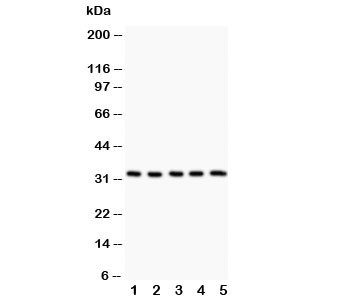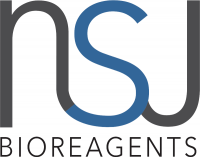Cookie preferences
This website uses cookies, which are necessary for the technical operation of the website and are always set. Other cookies, which increase the comfort when using this website, are used for direct advertising or to facilitate interaction with other websites and social networks, are only set with your consent.
Configuration
Technically required
These cookies are necessary for the basic functions of the shop.
"Allow all cookies" cookie
"Decline all cookies" cookie
CSRF token
Cookie preferences
Currency change
Customer-specific caching
FACT-Finder tracking
Individual prices
Selected shop
Session
Comfort functions
These cookies are used to make the shopping experience even more appealing, for example for the recognition of the visitor.
Note
Show the facebook fanpage in the right blod sidebar
Statistics & Tracking
Affiliate program
Conversion and usertracking via Google Tag Manager
Track device being used

| Item number | Size | Datasheet | Manual | SDS | Delivery time | Quantity | Price |
|---|---|---|---|---|---|---|---|
| NSJ-R30441 | 100 µg | - | - |
3 - 10 business days* |
772.00€
|
If you have any questions, please use our Contact Form.
You can also order by e-mail: info@biomol.com
Larger quantity required? Request bulk
You can also order by e-mail: info@biomol.com
Larger quantity required? Request bulk
0.5mg/ml if reconstituted with 0.2ml sterile DI water. 11-beta-hydroxysteroid dehydrogenase type... more
Product information "Anti-HSD11B1"
0.5mg/ml if reconstituted with 0.2ml sterile DI water. 11-beta-hydroxysteroid dehydrogenase type 1 is an NADPH-dependent enzyme highly expressed in key metabolic tissues including liver, adipose tissue, and the central nervous system. In these tissues, HSD11B1 reduces cortisone to the active hormone cortisol that activates glucocorticoid receptors. It is inhibited by carbenoxolone, a drug typically used in the treatment of peptic ulcers. Tannin et al.(1991) localized the HSD11B1 gene to chromosome 1. The localization was confirmed by isolating the gene from a chromosome 1-specific library using the cDNA as a probe. Schutte et al.(2000) mapped the HSD11B1 gene to 1q32-q41. Protein function: Controls the reversible conversion of biologically active glucocorticoids such as cortisone to cortisol, and 11- dehydrocorticosterone to corticosterone in the presence of NADP(H) (PubMed:10497248, PubMed:12460758, PubMed:14973125, PubMed:15152005, PubMed:15280030, PubMed:17593962, PubMed:21453287, PubMed:27927697, PubMed:30902677). Participates in the corticosteroid receptor-mediated anti-inflammatory response, as well as metabolic and homeostatic processes (PubMed:10497248, PubMed:12414862, PubMed:15152005, PubMed:21453287). Plays a role in the secretion of aqueous humor in the eye, maintaining a normotensive, intraocular environment (PubMed:11481269). Bidirectional in vitro, predominantly functions as a reductase in vivo, thereby increasing the concentration of active glucocorticoids (PubMed:10497248, PubMed:11481269, PubMed:12414862, PubMed:12460758). It has broad substrate specificity, besides glucocorticoids, it accepts other steroid and sterol substrates (PubMed:15095019, PubMed:15152005, PubMed:17593962, PubMed:21453287). Interconverts 7-oxo- and 7-hydroxy-neurosteroids such as 7- oxopregnenolone and 7beta-hydroxypregnenolone, 7- oxodehydroepiandrosterone (3beta-hydroxy-5-androstene-7,17-dione) and 7beta-hydroxydehydroepiandrosterone (3beta,7beta-dihydroxyandrost-5-en- 17-one), among others (PubMed:17593962). Catalyzes the stereo-specific conversion of the major dietary oxysterol, 7-ketocholesterol (7- oxocholesterol), into the more polar 7-beta-hydroxycholesterol metabolite (PubMed:15095019, PubMed:15152005). 7-oxocholesterol is one of the most important oxysterols, it participates in several events such as induction of apoptosis, accumulation in atherosclerotic lesions, lipid peroxidation, and induction of foam cell formation (PubMed:15095019). Mediates the 7-oxo reduction of 7-oxolithocholate mainly to chenodeoxycholate, and to a lesser extent to ursodeoxycholate, both in its free form and when conjugated to glycine or taurine, providing a link between glucocorticoid activation and bile acid metabolism (PubMed:21453287). Catalyzes the synthesis of 7-beta- 25-dihydroxycholesterol from 7-oxo-25-hydroxycholesterol in vitro, which acts as a ligand for the G-protein-coupled receptor (GPCR) Epstein-Barr virus-induced gene 2 (EBI2) and may thereby regulate immune cell migration (PubMed:30902677). [The UniProt Consortium]
| Keywords: | Anti-HSD11, Anti-11-DH, Anti-11-beta-HSD1, Anti-7-oxosteroid reductase, Anti-11-beta-hydroxysteroid dehydrogenase 1, Anti-Corticosteroid 11-beta-dehydrogenase isozyme 1, Anti-Short chain dehydrogenase/reductase family 26C member 1, HSD11B1 Antibody |
| Supplier: | NSJ Bioreagents |
| Supplier-Nr: | R30441 |
Properties
| Application: | WB, IHC (paraffin) |
| Antibody Type: | Polyclonal |
| Conjugate: | No |
| Host: | Rabbit |
| Species reactivity: | human, mouse, rat, monkey |
| Immunogen: | An amino acid sequence from the N-terminus of human HSD11B1 (MAYYYYSANEEFRPEMLQ) |
| Format: | Purified |
Database Information
| KEGG ID : | K15680 | Matching products |
| UniProt ID : | P28845 | Matching products |
| Gene ID : | GeneID 3290 | Matching products |
Handling & Safety
| Storage: | +4°C |
| Shipping: | +4°C (International: +4°C) |
Caution
Our products are for laboratory research use only: Not for administration to humans!
Our products are for laboratory research use only: Not for administration to humans!
Information about the product reference will follow.
more
You will get a certificate here
Viewed



